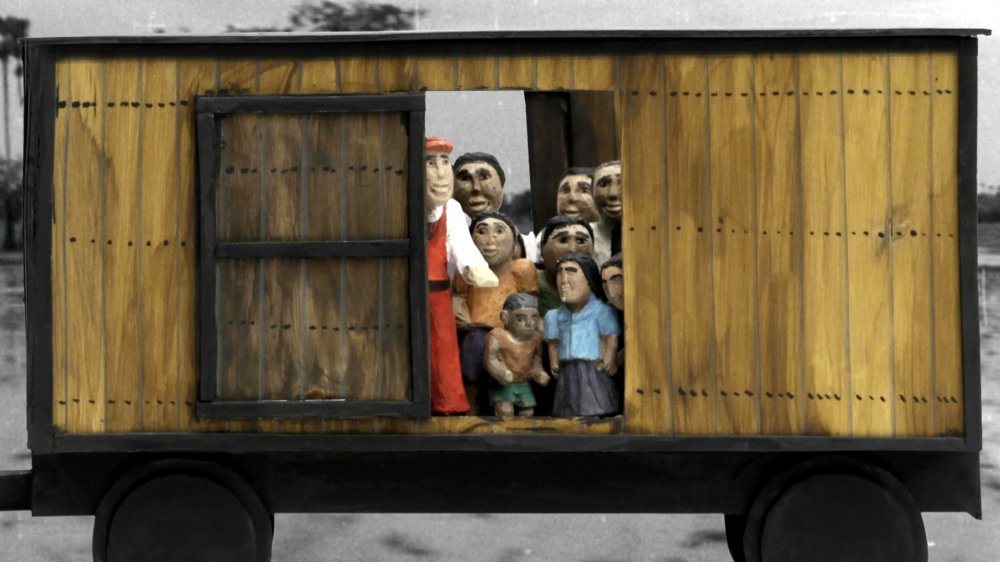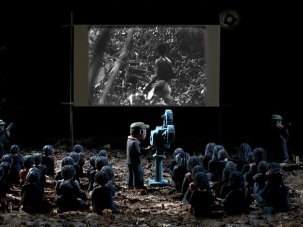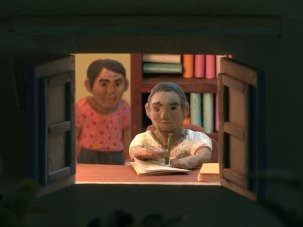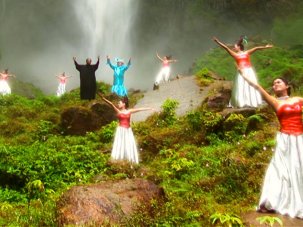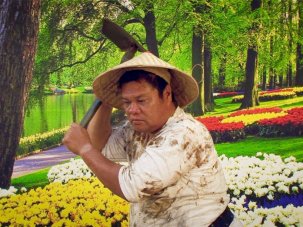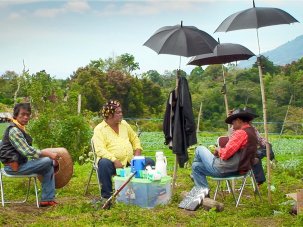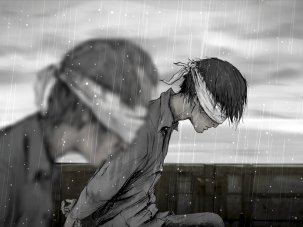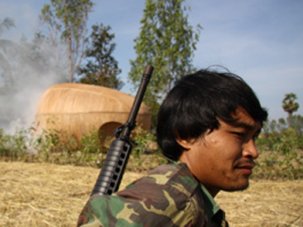“Sunlight is said to be the best of disinfectants; electric light the most efficient policeman,” wrote US Supreme Court justice Louis D Brandeis. What then of the ray of the projector (or the glow of the electric screen) when it tries to puncture the gloom of the past? Film has always offered us an unreliable – but unignorable – form of necromantic testimony, tantalising us with talismans of the recorded bygone, which is why cameras have rarely gained access to sites of our species’ more exhaustive efforts at human elimination.
The Missing Picture is now on limited theatrical release in the UK, distributed by New Wave Films (watch the trailer).
Panh’s fiction feature The Sea Wall is also available on DVD from Axiom Films.
One of the most striking, and moving, progressions in recent cinema though has been the endeavours of creative documentarians around the world to revive those unrecorded memories, and resurrect the honour of lives lost to the conspiracy of time, lies and silence. Patricio Guzmán, documentarian laureate of the scar of Chile’s murderous 1970s Pinochet regime, telescoped precisely that search through the bones of history into a meditation on time and cosmic oneness in 2010’s Nostalgia for the Light.
His Cambodian counterpart Rithy Panh is best known for his 2003 documentary S21: The Khmer Rouge Killing Machine, whose innovation of filming former Khmer Rouge torturers (as well as their victims) reminiscing in the very grounds where their atrocities took place inspired last year’s gothic horror show The Act of Killing, in which Joshua Oppenheimer and his anonymous collaborators asked us to peer into the abyss of Indonesia’s own killing fields through the addled eyes and ravaged imagination of the butchers.

Rithy Panh
Panh has made other mementos of the Cambodian genocide, before and since S21 (notably 2011’s Duch: Master of the Forges of Hell, face to face with the first Khmer Rouge leader to be convicted of crimes against humanity), as well as portraits of the victims of Cambodia’s latterday return to capitalism (contract labourers in 2000’s The Land of the Wandering Souls, actors in 2005’s The Burnt Theatre, prostitutes in 2007’s Paper Cannot Wrap Up Embers), plus docudramas and straight fiction (1994’s Rice People, 2008’s Marguerite Duras adaptation The Sea Wall, with Isabelle Huppert).
He’s also recently co-authored a memoir, The Elimination, whose reflections on his lost childhood, lost family and the pathology of the Khmer Rouge he has distilled (with a script likewise co-authored with Christophe Bataille) into the spare and plaintive The Missing Picture, which won the Prix Un Certain Regard at last year’s Cannes.
The Missing Picture’s first two shots set the scene perfectly for the film’s dialectic of destruction and recreation: rolls of decaying film in rusting cans; a figurine being carved from clay. The film’s title is given several spins during the film, but it principally denotes Panh’s strategy of restaging his history, and the people in it, as tableaux of these figurines. Silent as they are, they speak volumes: of fragility, malleability and dehumanisation, but also of material and artistic resistance; their carving conjures suggestions of puppetry and of god-playing, but also of renewal from the earth and dust. And their stillness serves as a rejoinder to Panh’s other primary material, archival Khmer Rouge propaganda films, full of the smiling faces of madmen and the termite bustle of indentured humans working themselves into the ground.
I spoke to Panh, who divides his time between Phnom Penh and Paris, in advance of his trip to Amsterdam’s IDFA documentary festival as last year’s director in focus.
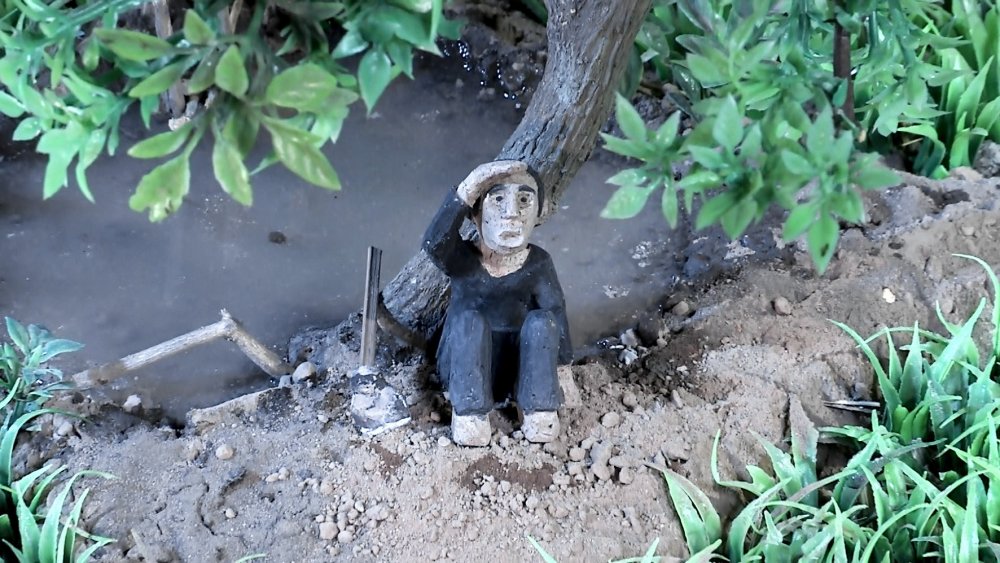
The Missing Picture (2013)
Your use of clay figurines is a simple idea, yet hugely resonant…
I’ve made a lot of films about the Khmer Rouge genocide, but I don’t want just to record testimony. What I like to do with every film is to bring a form, like a cinematographic proposal. If you watch S21, it’s a form; Duch, Master of the Gates of Hell is different proposal. S21 inspired a lot of people, even Josh[ua] Oppenheimer – it pushes forward.
For The Missing Picture, it’s very personal, about a part of my life when I was still a child. The idea that life can come back again through clay, with water, with the sun, gave me a new possibility to explore the cinematographic film.
I was just reading an interview you gave Oppenheimer a few years ago for his recent compendium Killer Images: Documentary Film, Memory, and the Performance of Violence. You mention having no interest in recounting what you lived through under the Khmer Rouge; that you were interested in more general or others’ experiences. I was wondering if you’d been rediscovering your childhood since then – or if the emotional dam finally burst?
Maybe, but I’m not sure. Certainly now I have more distance, but it’s curious: with age we feel pain [all the] more. For many years I hoped that the pain would lessen, but it’s not true at all. This may be too simple, but I have the idea that I died once already, under the Khmer Rouge, and then was reborn, but with the pain, the death inside me. I have to accept it, this pain, and live with it until the end of my life – my second life.
It comes like a wave sometimes. I put in the film three times this big wave that can swallow you. You try to stand up and continue because it’s something you have to do: to transmit, not the horror, but the dignity and humanity of the people who died. Say one of your friends is near death and he asks you, “Please, if you see my family, tell them I love them.” You have to transmit this, because you’re a survivor – and not because you’re stronger, but because the man who died helped you to survive. That’s why we have to transmit, to remember all those people.
That’s what I try to do, but it’s also important to me to learn every day to become simply a film director, not a film director of the Khmer Rouge genocide. I’m not a specialist; I want to be a film director – because it would mean I’m still alive. And because an artist brings more than testimony: he brings imagination, creation, the idea how to fight against totalitarianism. That’s an artist. And I made the film because I want this story to belong to everyone. It’s my story, I have to film it, but what happened in Cambodia happened everywhere.
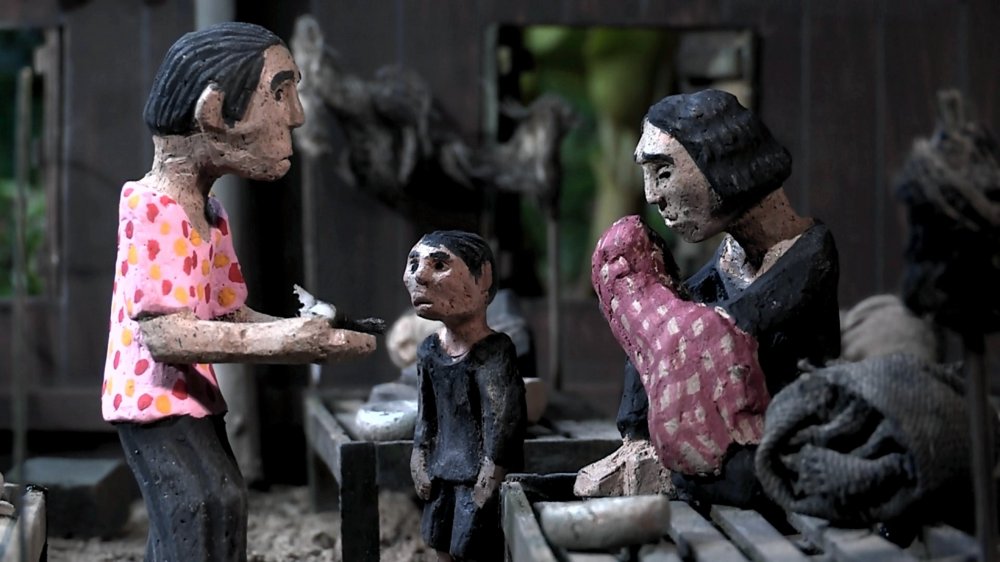
The Missing Picture (2013)
It’s striking how many films are finally emerging to confront atrocities, crimes against humanity and even genocides that took place in the 60s and 70s, from Latin America to south-east Asia. It must be partly a function of time and of people being able to process and express those experiences. I was wondering specifically what kinship you felt with what Oppenheimer did with The Act of Killing. He talks about being inspired by S21, but like you he had to work through moral and aesthetic questions around how to represent those horrors – and how to represent both the victims and the perpetrators.
Hmm… each director can do what he wants to do, but there are one or two conditions you have to respect. You cannot break [your] moral position to make a film – that’s very important. I don’t want to [cede] my place to the perpetrator.
A film is also a fight: making a film is not something that makes me happy. I’m happy when it’s done, but when I make a film, sometimes it’s very complex, very painful. People ask me ‘Why did you do it again, if you suffered making it?” Because I cannot do [other things] – I cannot sing, draw, write, you know? And I have a story to transmit. And I have the dignity of those people who died to defend.
After that, each director has a different approach to their story, how they shoot… When I make a film I don’t watch a lot of other films. I read a lot; I try to read poems, things that can liberate my human condition, that make me go away… I spend a lot of the time doing nothing, just concentrating on the subject. Sometimes I’ll sit in my chair for two or three hours without doing anything. People try to build with their pain, you know?
I wanted to ask you about Shoah and Claude Lanzmann’s ideas about what you can and can’t show in relation to genocide.
I think what we do is not the work of a historian. Historians have a very scientific way of working. Sometimes they even deny testimony, because they work in their way. Also, justice cannot resolve everything in a genocide case; [judges] cannot find all the truth. There’s not just one truth, and the reason I make a film is that it’s only my truth, not everybody’s.
But I think that art, like books or films, can complete historians’ work and the work of justice. Because cinema opens a new field for people… when people watch a film they come together, to watch and talk together. They change immediately. Cinema can also capture, for example, the reenactment that books cannot, that justice cannot show.
It’s very important that every party comes together if you want to approach the truth. We cannot bring justice in genocide cases, it’s impossible; and sometimes in history books, there’s a tendency to take a side. So I believe art can complete the other work.

The Missing Picture (2013)
One of the paradoxes that The Missing Picture plays with is that whereas we expect a documentary to be about ‘reality’, this film looks deeper. It’s a film about things that don’t exist and things that didn’t exist: a quest for things that were stolen away, that history stole away, to be replaced by things that never existed.
Yeah, but you know there’s no reality in cinema, no truth in cinema. People can call it ‘cinema of reality’, ‘true cinema’, but there’s no truth in the image.
In the beginning when I started watching and making films, I believed cinema could capture reality – when I was younger, 30 years ago [he laughs blackly]… And I spent a lot of time trying to find the truth in the image. Thirty years later, I’ll just say there’s no truth in cinema.
But what you feel – cinema can bring you on the road, put you on the very long journey to truth. It’s a lot. The truth is what you feel after watching the film, not in the image itself. Every film is subjective – and it’s good. When you capture something, even a testimony, you need to come back again and again and work on it. But you have to be free to make your film.
How hard was it to find the form of the film? Do you think it’s your most adventurous experiment?
I took a lot of time to find this idea. When I make a film, at the beginning I don’t know what I want to do. To find money to make a film you have to write maybe 50 pages to explain what you’d like to do, what the film will be; but everybody lies. Because he doesn’t know what the film will be. Everybody writes 50 pages and sends it to a TV channel, a producer, to get money, but everybody lies. Or else your film is not interesting. Of course you can take the page and put a commentary, a voiceover, but it’s not cinema for me, it’s just edited images. Cinema is much more difficult than that. I started to understand 15 or 20 years ago that I cannot make a documentary like a feature film, writing scripts, then shooting. With a documentary films I need to film to see what I want to film, and discover it little by little.
Sometimes it take two years, sometimes four or five. With The Missing Picture, we’d shot for a year and a half already when this idea of the clay figurine, the life that comes from the earth, came to me, and I changed everything.
You can see immediately how strong, how poetic the images are: they’re adult, but like something children have made. Only great artists – Chagall, Kandinsky, Picasso sometimes, at the end; Miró – can do that, make paintings like children but so beautiful. I think they kept something from their childhood, this innocence, that we lose every day.
But I’m lucky because the producers liked the results. It’s not easy to make a film with clay figurines for an hour and a half, to keep attention, give emotion, maintain a cinematographic point of view. Imagine going to see [funders] and tell them: “I want to make a film about my childhood, and I’ll use clay figurines.” Everybody will go away. Talking like that will not work.
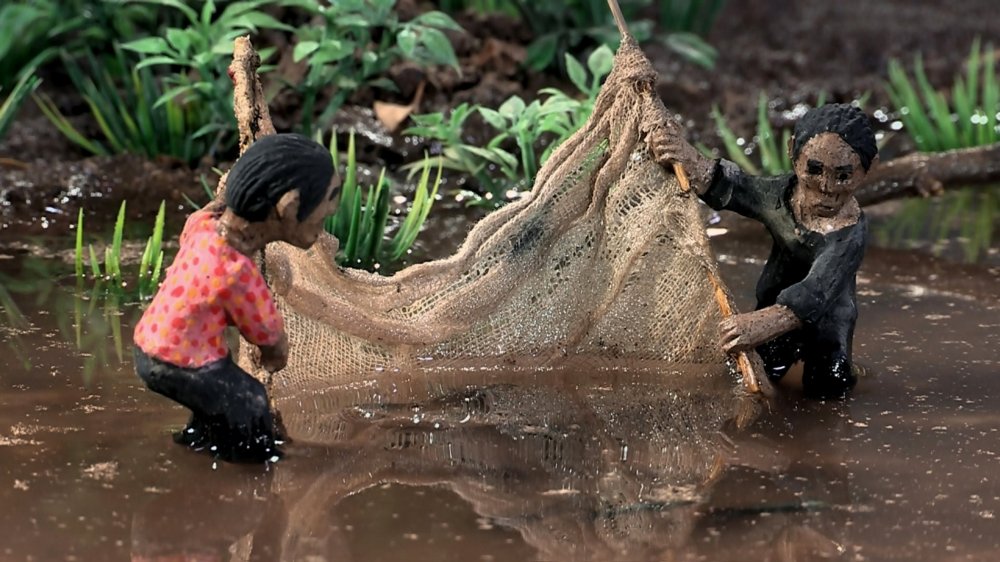
The Missing Picture (2013)
I also wanted to ask you about finding and using archive film. We sometimes sanctify or fetishise these images that document the past, but in your film, partly because they’re propaganda and partly because the point of view is so sinister – almost the only people we see are madmen – it put me in mind of the beginning of cinema and Gorky’s review of his first encounter with the movies: “not life but its shadow, not motion but its soundless spectre…”
At the beginning of the cinema, propaganda was already there. When the cinema exists, propaganda exists. But it’s very interesting: later, 30 or 100 years, some propaganda films [countermand] the original ideology they wanted to show us. You watch a film by Leni Riefenstahl or a great director like Eisenstein, which is propaganda and cinema. Years later you can find a completely new point of view in it.
I like very much archive film because even in Khmer Rouge propaganda, for instance, you see very healthy people in front of you, but in the background you can also see people who walk slowly because they are tired and have no shoes; you can see how they live, many many things.
Sometimes I repeat the same archive film over many films. We have [access to] the whole archive but I prefer to repeat the same images, because I want people to watch the same images each time.
Do young Cambodians need and watch your films?
Yes, yes. At the beginning when I started making films, nobody wanted to watch my films. Firstly, my generation wanted to forget – but it’s not possible.
Secondly, it’s hard to tell your children how your parents died and how you lost all your dignity in this genocide. It’s not easy to tell your children that you had to eat insects and roots like animals to survive. Human beings do not eat roots.
Now, 30 years later, children want to know why their grandparents died. You cannot move forward if you don’t understand where you come from, what the problems were. These young people come to my films to understand what happened, to retrieve their history and find a response. It’s normal that people didn’t want to talk [about this history] earlier – but now they come with their children, more and more.
-
Sight & Sound: the January 2014 issue

In our January issue: The best films of the year, plus Spike Jonze’s computer romance, Bong Joonho versus Harvey Weinstein and Alexander...
-
The Digital Edition and Archive quick link
Log in here to your digital edition and archive subscription, take a look at the packages on offer and buy a subscription.




